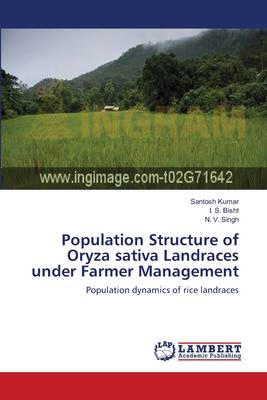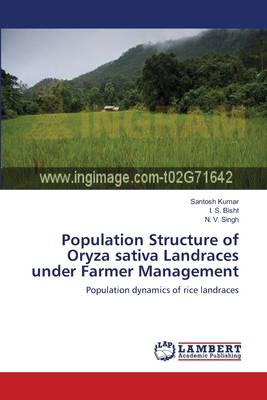
Door een staking bij bpost kan je online bestelling op dit moment iets langer onderweg zijn dan voorzien. Dringend iets nodig? Onze winkels ontvangen jou met open armen!
- Afhalen na 1 uur in een winkel met voorraad
- Gratis thuislevering in België vanaf € 30
- Ruim aanbod met 7 miljoen producten
Door een staking bij bpost kan je online bestelling op dit moment iets langer onderweg zijn dan voorzien. Dringend iets nodig? Onze winkels ontvangen jou met open armen!
- Afhalen na 1 uur in een winkel met voorraad
- Gratis thuislevering in België vanaf € 30
- Ruim aanbod met 7 miljoen producten
Zoeken
Population Structure of Oryza sativa Landraces under Farmer Management
Population dynamics of rice landraces
Santosh Kumar, I S Bisht, N V Singh
Paperback | Engels
€ 58,45
+ 116 punten
Omschrijving
The present study demonstrated farmer management of crop population structure and temporal evolution of rice genetic diversity in traditional production systems. The 16 STMS primers analyzed for 11 rice landrace populations indicated enough polymorphism to fully differentiate the inter- and intra-population diversity. A total number of 98 alleles were recorded of which 91 were common and 7 were rare. The mean number of alleles per locus was 6.12 and for different groups of rice landrace populations, namely five populations of upland common landrace Jaulia, three populations of irrigated common landrace Thapachini and one population each of three distinct rare landraces were 4.37, 2.75 and 4.37, respectively. The study revealed greater number of alleles per locus for on-farm managed populations as compared to the populations under static management. Further, the rare landrace populations included in the present study were more diverse than the common landrace populations. Investigating the population genetic structure is therefore helpful in monitoring change in diversity over time and space, and also for devising a rational plan for management of farmer landraces on-farm
Specificaties
Betrokkenen
- Auteur(s):
- Uitgeverij:
Inhoud
- Aantal bladzijden:
- 140
- Taal:
- Engels
Eigenschappen
- Productcode (EAN):
- 9783659182457
- Verschijningsdatum:
- 5/08/2012
- Uitvoering:
- Paperback
- Formaat:
- Trade paperback (VS)
- Afmetingen:
- 152 mm x 229 mm
- Gewicht:
- 213 g

Alleen bij Standaard Boekhandel
+ 116 punten op je klantenkaart van Standaard Boekhandel
Beoordelingen
We publiceren alleen reviews die voldoen aan de voorwaarden voor reviews. Bekijk onze voorwaarden voor reviews.











